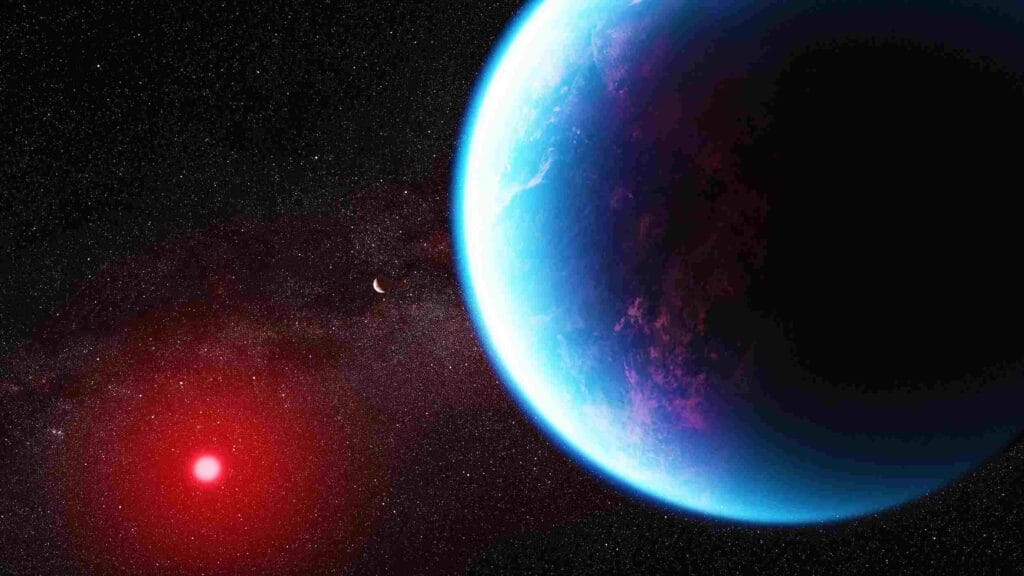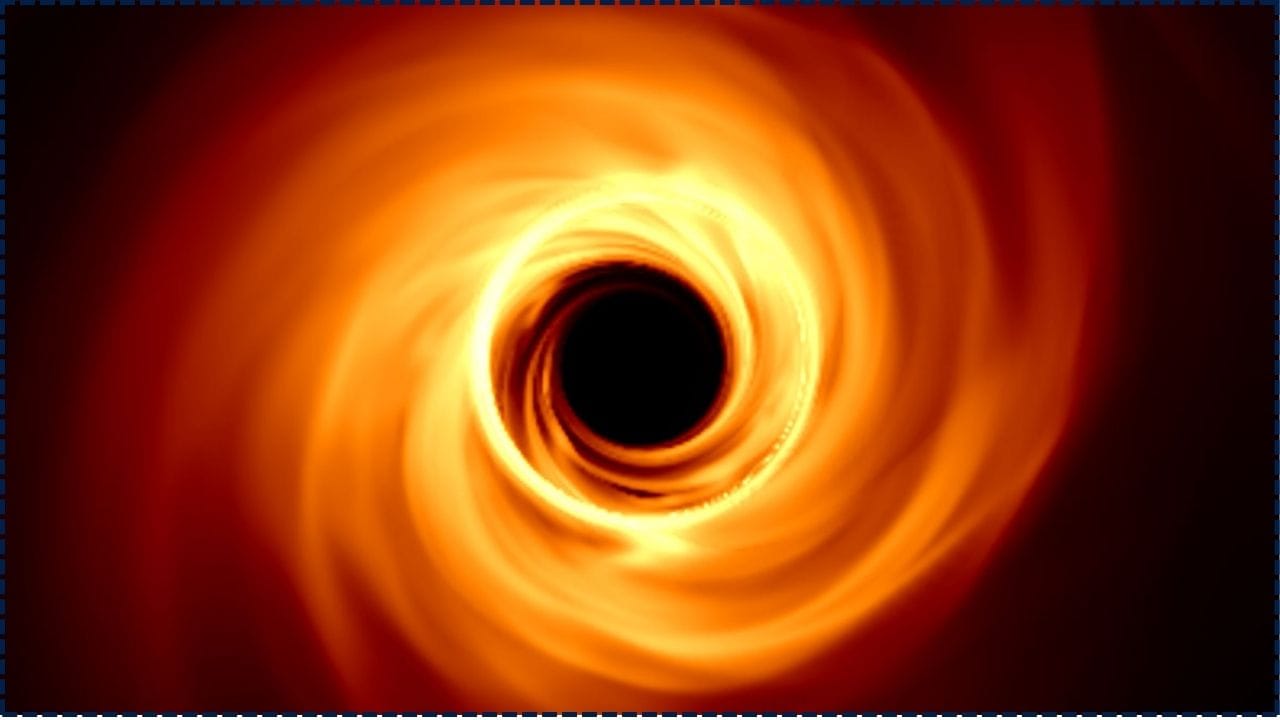In an inspiring and truly groundbreaking discovery that ignites our collective hopes for finding life beyond Earth, scientists have identified compelling and tantalizing signs suggesting that the distant exoplanet K2-18b, a world residing approximately 124 light-years away from our own, nestled within the celestial embrace of the constellation Leo, may indeed harbor conditions conducive to life as we understand it. This remarkable finding stems from the invaluable data collected by NASA’s revolutionary James Webb Space Telescope (JWST), a testament to human ingenuity and our relentless pursuit of knowledge.

Through its powerful gaze, researchers have peered into the atmospheric veil of K2-18b, detecting the presence of key molecules that paint a fascinating picture of its potential habitability. These crucial components include methane (CH₄) and carbon dioxide (CO₂), vital elements in planetary chemistry, alongside the exciting potential detection of a biosignature gas known as dimethyl sulfide (DMS). On Earth, DMS is predominantly produced by life, particularly marine microorganisms, adding a layer of profound intrigue to this discovery.
Super-Earth K2-18b Sparks Hope for Life
| Feature | Details |
|---|---|
| Planet Name | K2-18b |
| Distance from Earth | Approximately 124 light-years |
| Planet Type | Super-Earth / Hycean World |
| Atmospheric Composition | Presence of methane (CH₄), carbon dioxide (CO₂), and potential detection of dimethyl sulfide (DMS) |
| Significance of DMS | On Earth, DMS is primarily produced by marine phytoplankton, making it a potential biosignature gas |
| Discovery Tools | Observations made using the James Webb Space Telescope (JWST) |
| Implications | Potential habitability due to the presence of key molecules and conditions that may support life |
| Cautionary Notes | Further observations are needed to confirm the presence of DMS and to rule out non-biological sources for the detected molecules |
| Official NASA Report | NASA’s Webb Discovers Methane, Carbon Dioxide in Atmosphere of K2-18 b |
The recent findings on K2-18b mark a significant milestone in the quest to find life beyond Earth. The detection of molecules like methane, carbon dioxide, and potential signs of dimethyl sulfide in its atmosphere suggests that this distant world could harbor conditions suitable for life. While these discoveries are promising, they are just the beginning. Continued observations and studies are essential to confirm these findings and to deepen our understanding of K2-18b’s potential habitability.

Understanding K2-18b: A Potential Hycean World
K2-18b is a super-Earth, meaning it has a mass and size larger than Earth’s but smaller than that of ice giants like Neptune. Specifically, it is about 8.6 times more massive than Earth and 2.6 times its radius. The planet orbits within the habitable zone of its host star, K2-18, where temperatures could allow for liquid water to exist—a crucial ingredient for life as we know it.
What sets K2-18b apart is its classification as a Hycean planet. These are theoretical worlds with hydrogen-rich atmospheres and vast oceans beneath. The combination of a thick atmosphere and potential global oceans makes Hycean planets intriguing candidates in the search for extraterrestrial life.
Atmospheric Discoveries: Methane, Carbon Dioxide, and Dimethyl Sulfide
The JWST’s advanced instruments have allowed scientists to analyze the starlight passing through K2-18b’s atmosphere during transits, revealing the presence of several molecules:
- Methane (CH₄): A simple hydrocarbon that, on Earth, is produced both biologically and geologically.
- Carbon Dioxide (CO₂): A common atmospheric component on Earth, associated with respiration and combustion processes.
- Dimethyl Sulfide (DMS): A molecule that, on Earth, is almost exclusively produced by marine phytoplankton. Its potential detection on K2-18b is particularly exciting, as it could indicate biological processes.
While the presence of methane and carbon dioxide can be attributed to various non-biological processes, the potential detection of DMS is more intriguing. However, scientists urge caution, noting that further observations are necessary to confirm its presence and to rule out non-biological sources.
The Significance of Dimethyl Sulfide (DMS)
On Earth, DMS plays a role in cloud formation and is a byproduct of marine microbial life. Its detection in an exoplanet’s atmosphere could be a strong indicator of biological activity. However, it’s essential to consider that DMS can also be produced through non-biological means under certain conditions. Therefore, while its potential presence on K2-18b is promising, it is not definitive proof of life.
Turn Leftover Veggies into a Tasty Protein Meal – Try This Simple Oven or Air Fryer Recipe
Willpower Doesn’t Work? Don’t Worry! Check This Brain Trick to Adopt Habits Easily
Trump’s ‘Big, Beautiful Bill’ Isn’t Final Yet; These Are the Changes Senate GOP Wants Now
The Road Ahead: Confirming Habitability
The discovery of these molecules in K2-18b’s atmosphere is a significant step forward in exoplanet research. However, confirming the planet’s habitability requires:
- Further Observations: Additional data from JWST and other telescopes to confirm the presence of DMS and to detect other potential biosignature gases.
- Modeling Planetary Conditions: Understanding the planet’s temperature, pressure, and potential for liquid water to assess its capacity to support life.
- Ruling Out Non-Biological Sources: Ensuring that the detected molecules are not the result of abiotic processes.
Researchers emphasize the importance of a cautious approach, acknowledging that while the findings are exciting, they are not conclusive evidence of life.
FAQs
Q1: What makes K2-18b a candidate for habitability?
A1: K2-18b orbits within its star’s habitable zone and has a hydrogen-rich atmosphere with potential signs of water vapor and other molecules associated with life, making it a compelling candidate for further study.
Q2: Is the detection of DMS definitive proof of life on K2-18b?
A2: No. While DMS is associated with biological processes on Earth, its detection alone is not definitive proof of life. Further observations are needed to confirm its presence and to rule out non-biological sources.
Q3: What are Hycean planets, and why are they significant?
A3: Hycean planets are theoretical exoplanets with hydrogen-rich atmospheres and vast oceans. They are significant because their conditions could support life, and their thick atmospheres make them easier to study compared to Earth-like planets.
Q4: What are the next steps in studying K2-18b?
A4: Scientists plan to conduct more observations using JWST and other telescopes to gather more data on K2-18b’s atmosphere, confirm the presence of DMS, and search for other potential biosignature gases.








